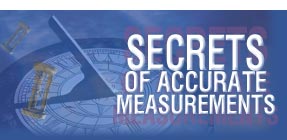 |
 |
 |
| RU |
|
Login
Newsletters
There is no newsletter category found. Information
|
The DOCSIS cable load generator from Rohde & Schwarz is the first to simulate networks using DOCSIS 3.1 signals06/04/2014 Manufacturers of consumer and professional electronics as well as cable network operators can now generate signals in line with the new transmission standard. Simulating a cable TV network with full channel loading, the R&S®CLGD DOCSIS cable load generator from Rohde & Schwarz implements digital and analog channels even in realtime and allows users to simulate any conceivable channel loading scenario.
Data over cable service interface specification (DOCSIS 3.1) enables the fast transmission of data over existing cable networks. The R&S®CLGD is the first generator that simultaneously produces signals for DOCSIS 3.1, DOCSIS 3.0, digital cable TV in line with J.83/A/B/C and analog cable TV. In the downstream or upstream, signals can be freely combined, enabling users to simulate any conceivable channel loading scenario.
The generator’s downstream frequency range is 47 MHz to 1794 MHz. Within this range, the R&S®CLGD generates up to six DOCSIS 3.1 channels with up to 192 MHz bandwidth each. The level, frequency, forward error correction (FEC) and constellation of these channels can be set independently. At the same time, the R&S®CLGD produces digital and analog TV signals that can be placed anywhere below or between the DOCSIS 3.1 signals. The upstream frequency range is from 5 MHz to 204 MHz. Within this range, DOCSIS 3.1 orthogonal frequency division multiple access (OFDMA) signals can be freely combined with DOCSIS 3.0 TDMA or CDMA signals. Thanks to its flexible multichannel signal generation capabilities, the R&S®CLGD can simulate network loading scenarios in a reproducible manner, making it ideal for testing tuners, cable modems and upstream CMTS receivers. What is mainly tested is how QAM or TDMA/CDMA signals in adjacent channels affect the reception of DOCSIS 3.1 signals. The R&S®CLGD makes such simulations realistic by adding different types of interference such as noise, reflections and narrowband interference. The R&S®CLGD can also be used to measure the linearity and the modulation of cable amplifiers or electrical/optical converters. The intuitive graphical user interface (GUI) of the R&S®CLGD makes it easy to configure complex test scenarios. The R&S®CLG can be controlled from a PC or via a web GUI. Remote control through SCPI commands or SNMP enables the generator to be used in automatic test systems. Rohde & Schwarz, www.rohde-schwarz.com Company profile: Rohde & Schwarz Related Information:
Companies' news
KIPiS articles
|
Current issue
Search
|
|
|
| © "Test & Measuring Instruments and Systems" ("KIPiS"), 2000-2024 |

























